St. John’s Wort and Chamomile Tea Blend for the Brain-Gut Connection
The nervous system and the digestive system go hand in hand. This St John’s Wort and Chamomile brain-gut connection herbal tea is one of many, many, many MANY combinations that can support both stress-reduction and anxiety-induced indigestion is through combining digestive nervine herbs.
As a type of CPTSD spreads through the collective as we approach another election, I have been addressing both of these areas steadily.
I hope this herbal formula inspires you to create a brain-gut supporting tea with your favorite herbs of the moment.
A Shift in Medicine Medium
A bit of a background side note: The base formula, some writing in this post, and the photos are from November of 2013.
I am going through my old writings and giving them new life on this blog.
It’s like my maiden self is showing up to help my current mother self who doesn’t have the want or time to sit and type. In this way, these old writings are a gift that keeps giving. Primarily they give to me, because I committed to writing each week. Between Lyme flares and homeschooling, this is proving to be difficult.
Thank you, pre-child self!
One reflection about this tea – and that entire time of my herbal practice around the time I took these photos – was that Milky Oats were in EVERYTHING.
Rose and Milky Oats.
Hawthorn and Milky Oats.
Schisandra and Milky Oats (Kidney support).
Skullcap and Milky Oats (of course).
I remember even being really into Hops and Milky Oats. Not quite sure what that combo was about… but I am not surprised. For so long, they were my herb of choice.
I started drinking long-infused Milky Oats daily in back in 2007, after I worked a couple days on an herb farm in Vermont called Zach Woods. They had big bags of stunningly fresh Milky Oats.
They weren’t cheap. I splurged.
Or should I say, I invested in the recovery and nourishing of my nervous system.
But something happened in my herbal world a few years back: I had to stop working due to Lyme and we went into debt. We were on a spending freeze. Milky Oats are fairly easy to grow, but I was hardly up for that.
When my big glass jar of Milky Oats ran out, that was it. No more incoming herb orders for me.
There were a few fresh harvests that I turned into tinctures. A school gardens I frequent has a patch of neglected Milky Oats. Not like I was totally missing out on my Milk Oats, I just moved from long infusions to tinctures.
Now I use Milky Oats as a base of adaptogen, nervine or sedative types of tinctures blends.
In the past, it was all about the teas. Milky Oats was central to many tea formulations then. Currently, I do not use Milky Oats in tea, I just don’t have it on the shelf. Thusly, these center-supportive teas look, taste and act different.
And the interesting thing is that I looked into ordering bulk Milky Oats again recently, and I was surprised to find that I was more attracted to Oat Straw this time around. I think this is because I have learned to love Milky Oat as a tincture, and I want more rustic upright weedy stalks in my nourishing infusions (like Alfalfa – yum).
Moral of the aside: Herbal practices come and go, ebb and flow.
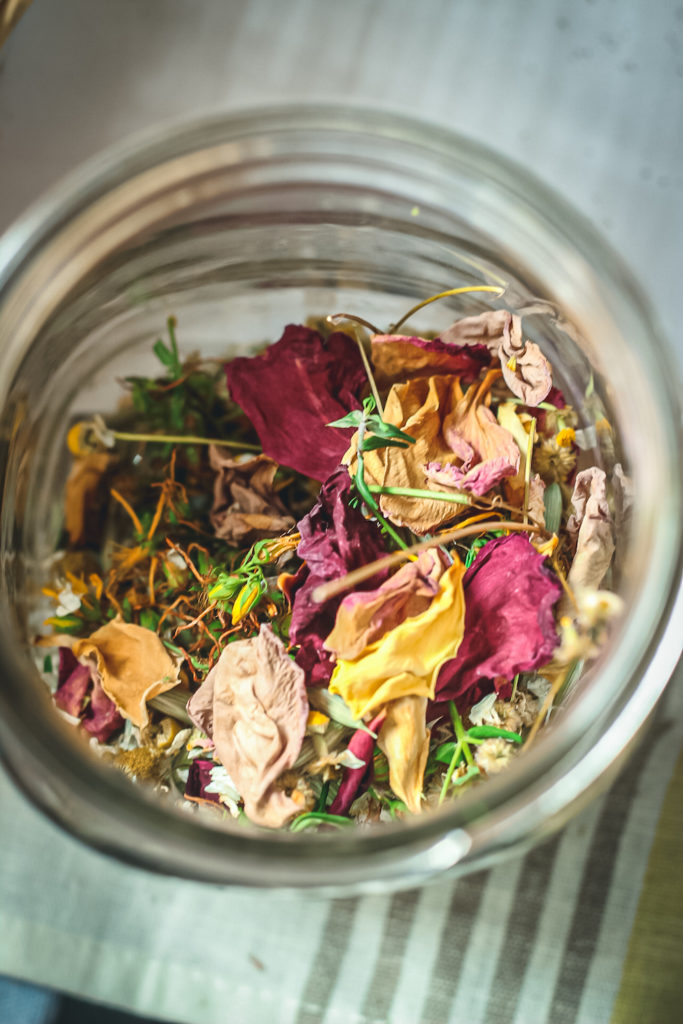
Make this – and any tea – your own
Back to this tea. This is not a super in-depth explanation of this tea as medicine. Right now I am not an intellectual type of herbalist.
At the current Oct 2020 moment, I am a “get that tea in my belly” type of herbalist, because I’ve been having intense stomach aches.
I have been using St. John’s Wort, Chamomile and Yarrow a lot. Sometimes I add in Plantain.
This week I went to my Chinese herbal practitioner and got a bulk herb formula (modified Huang Lian Tang with Wu Zhu Yu). It feels *so* good to be getting support. I haven’t seen my practitioner in over a year. It is a privilege I hope we all can have.
There have been a lot of leaky gut herb balls: Calendula, Plantain and Marshmallow powders mixed in coconut oil and honey, rolled in a little cinnamon and cocoa powders.
And I’ve been taking shots of Aloe juice all day long – I cannot tell you how much I love that herb/supplement!
Yet, as I have been operating from a level that is less thinking and more using what is easy and accessible to me, I come back to a combination in this tea: St. John’s Wort and Chamomile.
Instead of Milky Oats, which is more nourishing, demulcent and supportive of the Kidneys, I have been using bitter digestive and acrid moving/releasing Yarrow.
I think of these types of blog entries as a base of inspiration. They help me get the ideas rolling.
Examples of Brain-Gut Connection herbs
There are so many herbs to choose between when we think about the crossroads between the nervous system and the digestive system. Here are a few:
- Catnip – Aromatic venting mint with serious stress-reducing qualities. Helps with the stuffing of anxiety into the gut, and for when we get mean and crabby. I like to call this plant “Cannabis light” – it is a mild mind shifter and pain reliever. I adore Catnip with Chamomile.
- Peppermint, Spearmint, Melissa/Lemon Balm. Carminative aromatic plants with nearly equal digestive and nervous system actions. Calming to spasms and irritability of the tissues/organs, and calming to mental and emotional agitation. “Gladdens” and uplifts the spirit for those of us with “melancholic vapors”, as Culpepper would say in the 1600’s. Which is probably indicated for us all in 2020.
- Wood Betony – Cool digestive bitter with a sedative nervine action; supportive through deep sadness, wounding, and mood instability linked to the gut.
- Artemisas like Mugwort and Wormwood or local varieties – Digestive bitters with a mind calming and grounding tone. Connects the subconscious and gut and promotes dreams.
- Hops – Another cooling digestive and sedative herb like the Wood Betony, but with that distinctive sharp and shiver-inducing bitterness. With Artemisas for dream priming.
- Angelica archangelica – Warming, aromatic, carminative and digestive. Angelica helps create movement and freshening in the central pivot of our body, the gut/digestion. Angelica is not normally considered a strong nervine, but they can indeed help lift the spirit when you are in a state of sickness. The key for unlocking Angelica’s mental-emotional-spiritual qualities is that there has to be some sort of Yin type pathogen present for them to hold on to and bring up to release. A good indication for Angelica archangelica is when you are coming down with a cold or flu and feel despair and aching malaise. It’s as if the world is a painful place, and you feel threatened or even harmed by the elements of wind, damp and cold.
What would you chose for a belly-brain connective tea? Why?
What would you flavor it with?
What temperature and energetics do you want?
What action categories are you looking for?

Centering Tea with St. John’s Wort and Chamomile
- St. John’s Wort
- Milky Oats
- Chamomile
- Rose Petals
- Ginger
- Licorice
There was no real measurements, just a pinch or two or three tossed in the jar.
I like to steep my tea strong-ish, so the herbs take up around 1/3 of the jar and steep for 2-4 hours.
After I do a pour of the tea, I add more hot water to the strained herbs for another steeping. Why not get another few cups of their goodness?
This St. John’s Wort and Chamomile based tea works on the nervous system and the middle jiao (digestion). Upon drinking this, I feel its soothing and calming qualities, yet is is also warming as it gently moves Qi and Yang of the middle.
One comforting sip of this tea bring me back to my center. It is from this central position that we can be steadied. This St John’s Wort and Chamomile brain-gut tea blend both calms in anxious states, and helps us digest the experiences in and around us.
Overall, this tea helps to move Qi and ease stomach aches, increase healthy permeability and absorption in the gut, calms the emotions especially anxious states, tonfies worn-out adrenals (particularly when taken over time), warms and increases circulation.
Did I mention how tasty it is? Very sweet and soothing, especially with Chamomile from the garden and St. John’s Wort and Roses from the neighborhood. Nothing like local flavor.
Explanation of the herbs
St. John’s Wort
St John’s Wort is a sunny and warming herb, and helps to augment circulation while being a Liver Qi mover. This plant holds up the bright, sunny yellow area of the spectrum. They starts blooming around St. John’s Day (around the Summer Solstice). In Chinese medicine, yellow is the color of the Earth element and digestive functions.
This plant has a direct action on the nerves themselves and is regulating to the digestive system through strengthening the enteric brain and the brain-gut connection.
Everyday toxins and metabolites, experiences and emotions are free to flow through the liver with the support of SJW. Then are able to be digested and ushered out of the body via a more vitalized digestive tract.
St. John’s Wort is a highly-pigmented plant known to cause photosensitivity in grazing cattle. Interestingly, one of its many compounds and one that has been singled out for research, Hypericin, has impressive light-mediated antiviral activities. (Those pigments also lend themselves gloriously to an oil preparation).
This plant really does absorb light and uses it to fight “evil”. In the middle ages this evil was known as demons or curses, in our modern culture this evil is known as depression or SAD. In the research lab, this evil is a virus.
Christopher Hobb’s has a detailed historical review of this plant here.

Chamomile
Every time I think of the belly and/or the nervous system, I think of Chamomile.
German Commission E research has shown Chamomile is as calming as Valium. It is as lovely as happy baby and as strong as a powerful sedative, without knocking you out or having side effects.
Just today I was getting visceral body work, I had an image of little white and yellow happy round daisies when my stomach was being worked on. It took me a second to interpret what was being shown: my stomach was literally thinking of Chamomile.
See what I mean about being a “get those herbs in my belly” type of herbalist? That is literally what my body is telling me via gut feelings aka somatic intuition.
Chamomile. Sweet, bitter, warming and cooling both, yellow, white and green. All wrapped up in one tiny flower. The Physician Plant. Soothing to the nerves and digestion both.
Right now I am having a hard time elucidating how Chamomile “works” for digestion beyond being a bitter and vulnerary. All I can think about is the dreamy awe feeling when I see their bright shiny flower face blooming in the garden, and that delicious scent.
Wait – Maiden Celia has something to say about this.
Here is something I wrote about Chamomile in September of 2011:
Chamomile is a yellow, sunny, light herb with a depth to it. Flowers tend to ascend and disperse, but the bitterness weighs it down.
It is a flower that has an affinity to the solar plexus, the middle jiao, and it is both dispersing to food stagnation and promotes coordinated movement of the digestive system due to its aromatic nature. It has been shown to speed up the healing of peptic ulcers (Mills).
The carminative properties of chamomile, with its volatile oils, helps relax the gut; at the same time, it has bitter properties that promote healthy bile flow, so that the system is not only relaxed, but keeps moving as it should (Mills).
My purely opinionated guess it that from a Chinese medical perspective, it enters the Spleen, Stomach and Liver meridians, possibly the Intestines or Lung.
The Spleen and Stomach are the Earth organs, and are associated with our solar plexus, transformation and transportation of food, worry/over-thinking and with the flesh and muscles of the body – quite in alignment with the calming, relaxing and digestive properties of this herb, no?
I think the Liver is involved because the Liver’s job is to circulate Qi freely around the body. When this isn’t happening efficiently, as can easily be caused by emotional upsets (especially pent-up anger or frustration), one can very easily feel stuck, tense and irritated, but luckily chamomile can release states of tension. A close cousin to chamomile and another white/yellow flower, chrysanthemum, helps calm the Liver, too.
Thanks again to my old self for hitting the books and writing it out.
(This all makes me wonder what I can be cultivating for my future Crone self.)

Milky Oats
Avena is a soothing, nutritive herb, both in texture and action. If I see overt nervous system involvement with the digestion, I often reach towards Milky oats.
Milky Oats are best extracted in a long infusion, but I sometimes break that rule when I am using them in tea blends.
Rose Petals
Rose protects the heart so it can open, helps hold grief, and regulates the emotions.
This is an herb that helps to cool and move constricted Liver Qi to free up the Heart. Rose makes a good tea taste magical. Rose is a harmonizer of the Upper Jiao/Heart center, and a standby in almost all my tea blends, second only after Licorice. I also love Rose externally for burns and internally as a decadent Rose Elixir.
I love to use Rose as a flavor and formula harmonizer. Here I can barely taste the fragrant, floral, heady rose flavor, rather just bit of rosy spice that comes through.
Licorice and Ginger
Licorice is a soothing demulcent herb that enters the Spleen and Stomach and classic formula harmonizer. They are a Kidney Qi tonifying herb we in the Western herb world think of as a an adaptogen.
Ginger is in here as a warming digestive support, but they are *such* potent Spleen/Stomach medicine that they could be the chief herb of the entire formula if desired/necessary.
One such formula with fresh Ginger as the main herb is Li Zhong Wan, with Ren Shen/Ginseng, Bai Zhu/Atractylodes and Gan Cao/Licorice. I have seen this formula help so much with recovering from Cold in the Middle, like after the acute phase of a stomach bug has passed but the person still has weakness, loose stool, abdominal pain and no appetite.
When that person is a baby or a young child, someone who is chronically ill or elderly, it can be scary to not see them wasting away and not getting any better. Warming the middle really can help.
Take good care during this extra tender time.
Best of belly-brain tea time to you all,
Celia
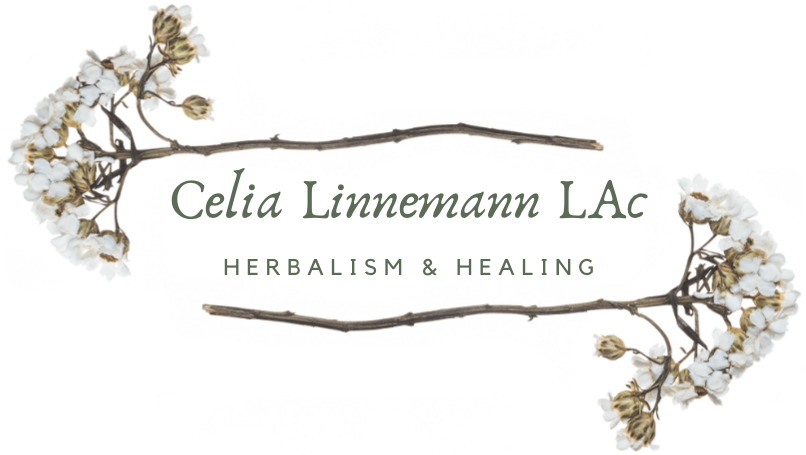

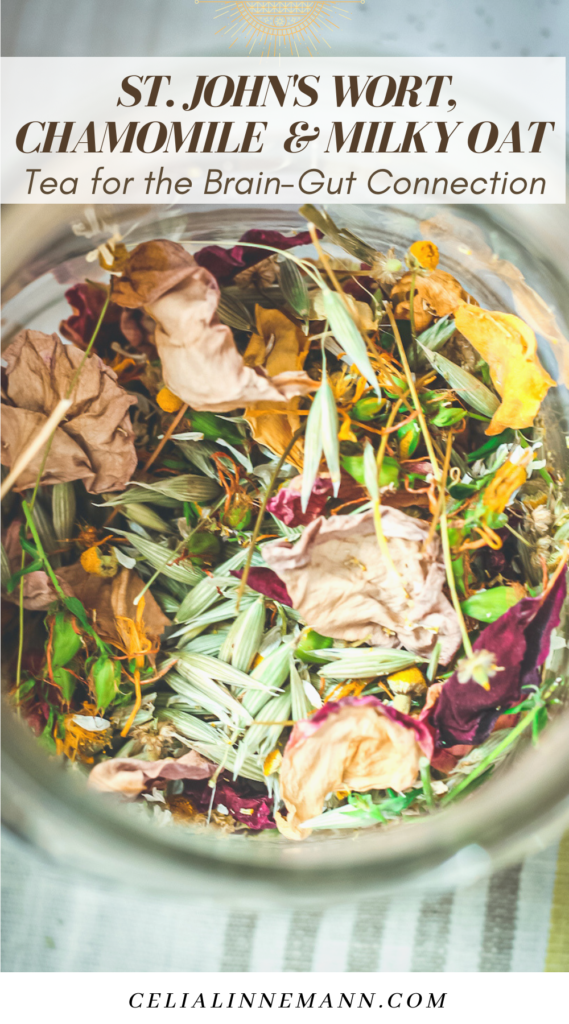
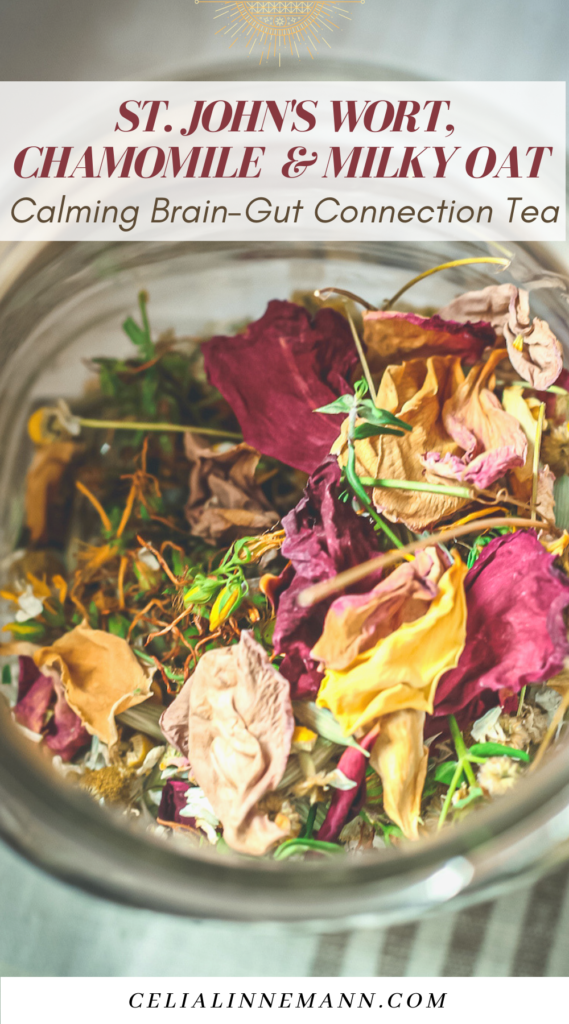


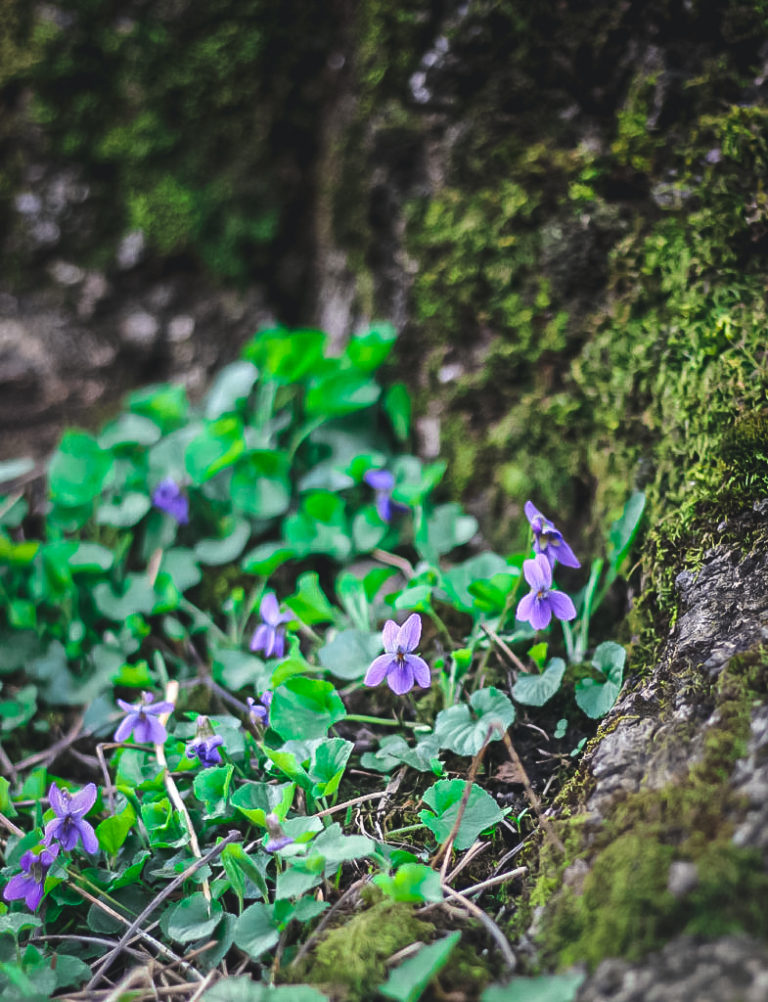


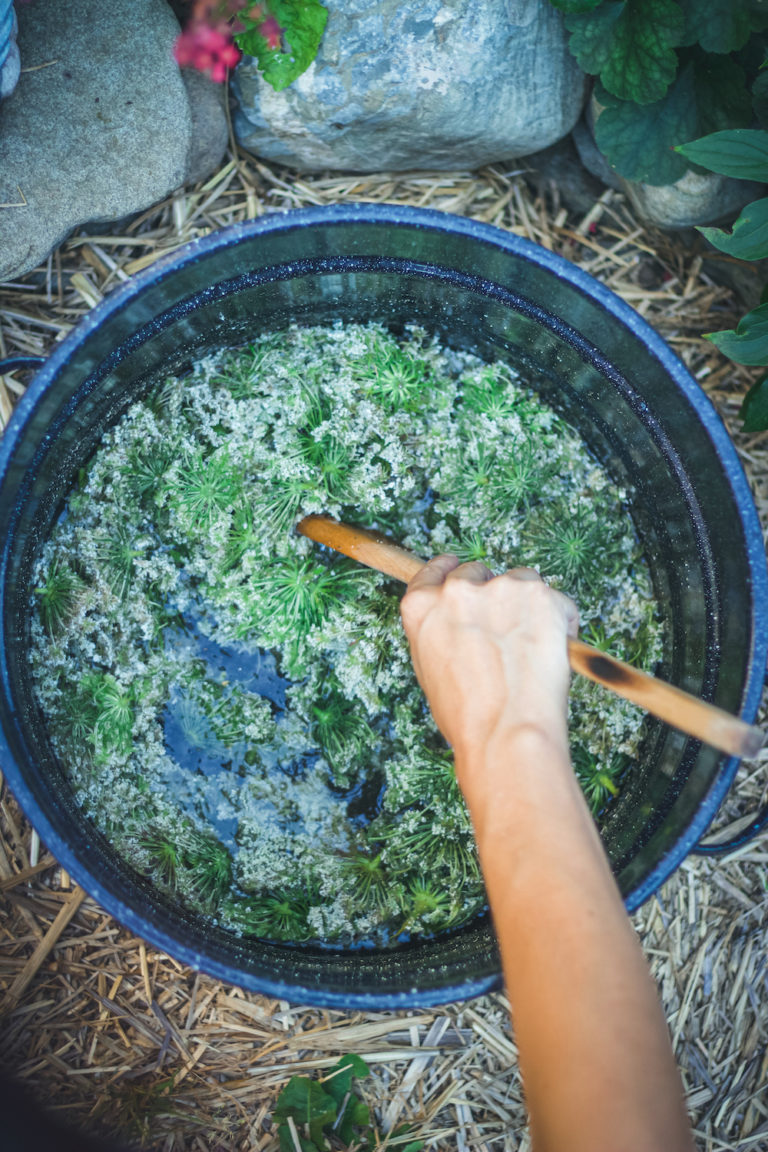

2 Comments